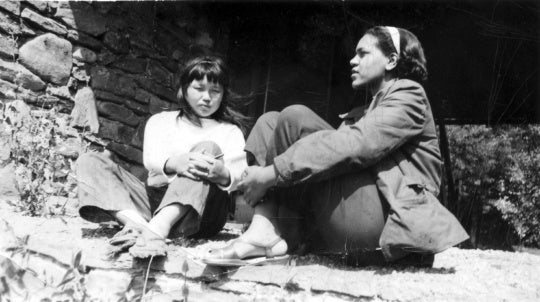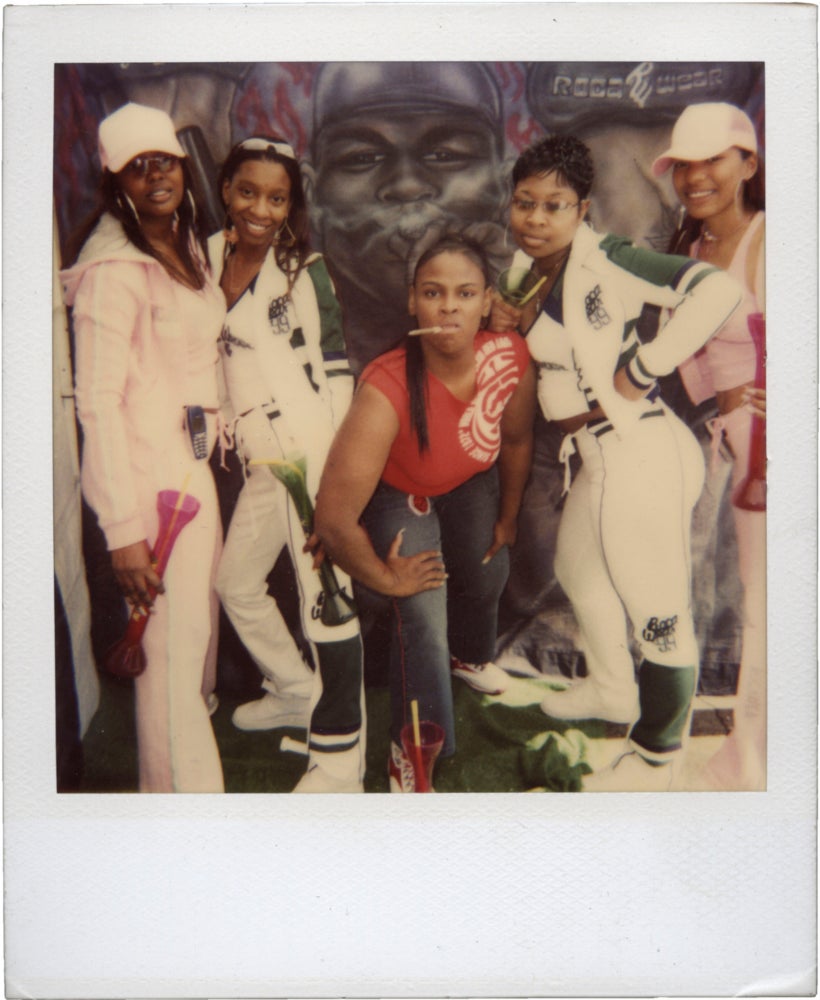
Since the mid-1980s, Selwhyn Sthaddeus “Polo Silk” Terrell has barely slept during the weekends. He would hit the first club on Friday around 11-11:30 pm, setting up his custom airbrushed backdrops across the street from the lines waiting for entrance. An instant, mobile photo studio. Hip Hop and Bounce music was in its infancy, and lines wrapped around the building outside the clubs. Inside might be D.J. Jubilee, U.N.L.V., Cheeky Blakk, Mystikal, Partners-N-Crime, DJ Jimi, Soulja Slim, Mia X, Hot Boy$, Magnolia Shorty, 5th Ward Weebie, Lil Wayne, Josephine Johnny, or Big Freedia. The whole of Cash Money Records. The city was bubbling and full of smartly dressed fans waiting outside, full of swag and brio. The line was the moment before the moment, the jubilation and anticipation, the certainty that anything was possible. Polo Silk and his polaroid camera, Chelsea, immortalized them all. $5 for three photos taken, one went with the customer as a keepsake from the moment before the moment, of memories to come, and the other two photographs would join Polo’s vast archive. Moving at a frantic pace, he could make it to four or five clubs in a night, the after hours, then the after, after hours, before a morning parade, an afternoon cookout, a second line…Friday night would soon become 5 am Monday, which was time to clock in at his day job.
Picture Man: Portraits By Polo Silk, at the New Orleans Museum of Art (NOMA), closed as of January 22, 2023, was a survey exhibition from his 1987-2007 archive. Much like the inside of any night at a club, his images blur the lines between fashion and performance. He often caught people at the best of who they were, immortalized in their self-assurance/confidence of self. The pictures are posed, but with a spur-of-the-moment necessity of getting to the next customer. At times, the “sitter(s)” pose feels carefully chosen. Others feel collaborative as if you can almost sense the prompts for fun coming from behind the camera. Repeatedly, the exhibition exuded generosity. It was a reminder that New Orleans culture is unlike anyplace else in the United States. It’s also a city under constant threat of neighborhoods being rapidly erased by gentrification or tropical storms. And so, these photos are a nicely patinaed timestamp for evolving trends in fashion and music, but also of people that have come and gone, that moved away or walked on. Viewers were forgiven if they forgot that these aren’t our memories. We are living vicariously. It’s an intimate sensation—like looking at a loved one’s high school yearbook.
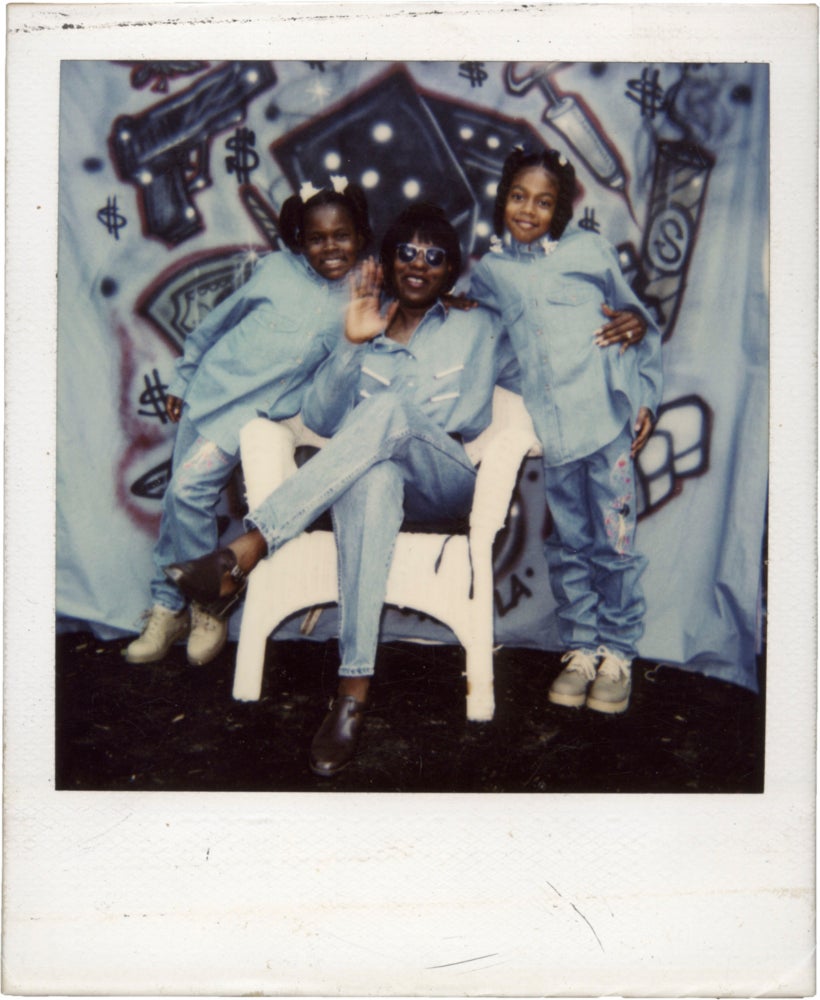
With the photos, you linger on the sartorial togetherness of the group shots. You dawdle on the commanding faces of statuesque young men projecting buccaneer-ish importance. They balance knowing poker-faced smiles with the force of totems. The women are more outward, soft and quirky, a fearless tangle of glowing bodies. They bring their own exaggerated monumentality, a way to communicate power, and the regal stance of a hand on the hip.
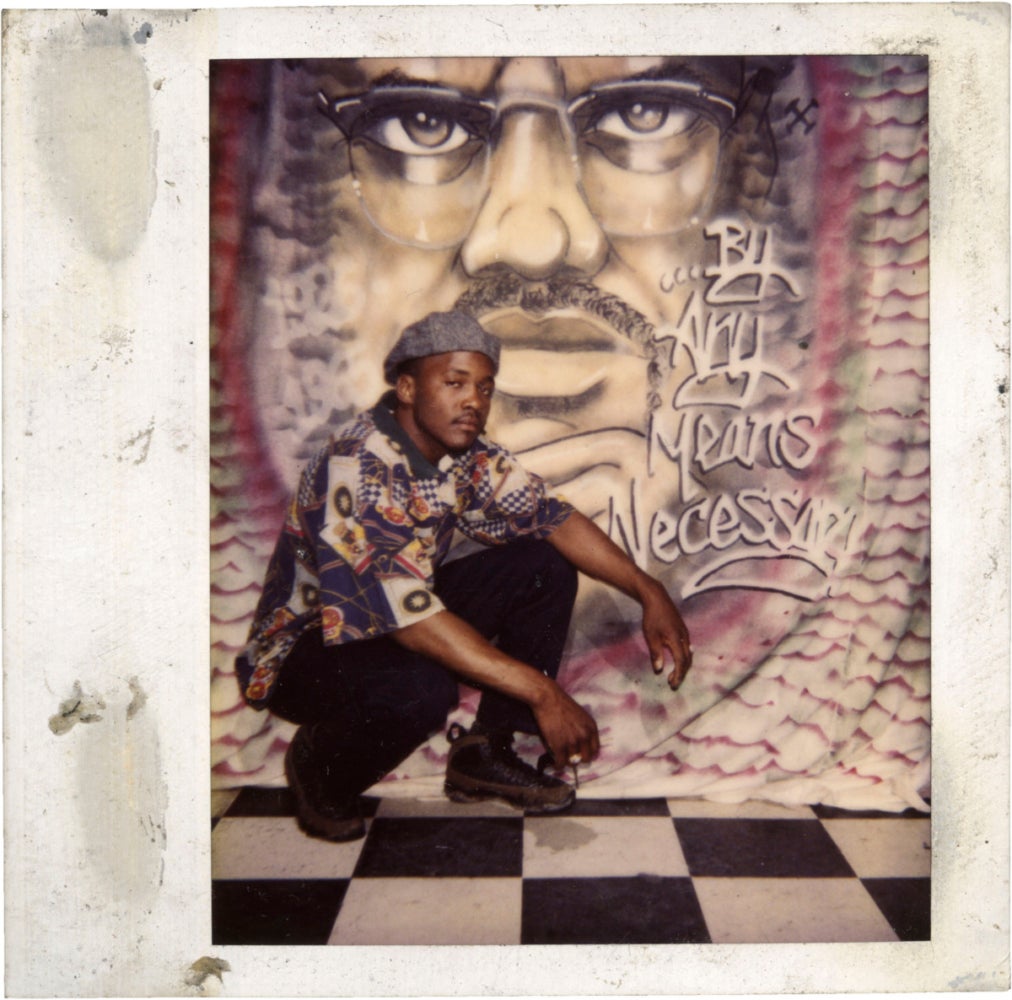
2021.70. Copyright and courtesy of Polo Silk, Fab 5 Legacy Archive and the New Orleans Museum of Art, New Orleans, Louisiana.
There is a humorous contrast in Vote for Me (Mayor Marc Morial), 1994, as the former mayor smiles for the camera in his dark, fully buttoned suit. His hand throws a peace sign wave to potential constituents in the crowd. All around him float brassy, airbrushed notes. Just over his shoulder, a cartoonish grand marshal implores the crowd: “Let’s Go to the Second Line.” Included in the exhibition was a series of unique Polacolor prints, which have been placed inside commercial cardboard souvenir photo holders. It’s as though they were sourced from an incredible cruise ship. My favorite, Chillin!, 1994, shows a young man in a bright red tee, shredded jeans, and stark white tennis shoes against the linoleum floor. He squats low and smiles big. Behind him, a painted butt does the devil’s dance. There is weed, dice, and the proclamation to “Putcha Ward On Da Map!” The title is lifted directly from the scene, as the man is encased in an ice cube, and on either side of him, penguins pirouette in the snow.
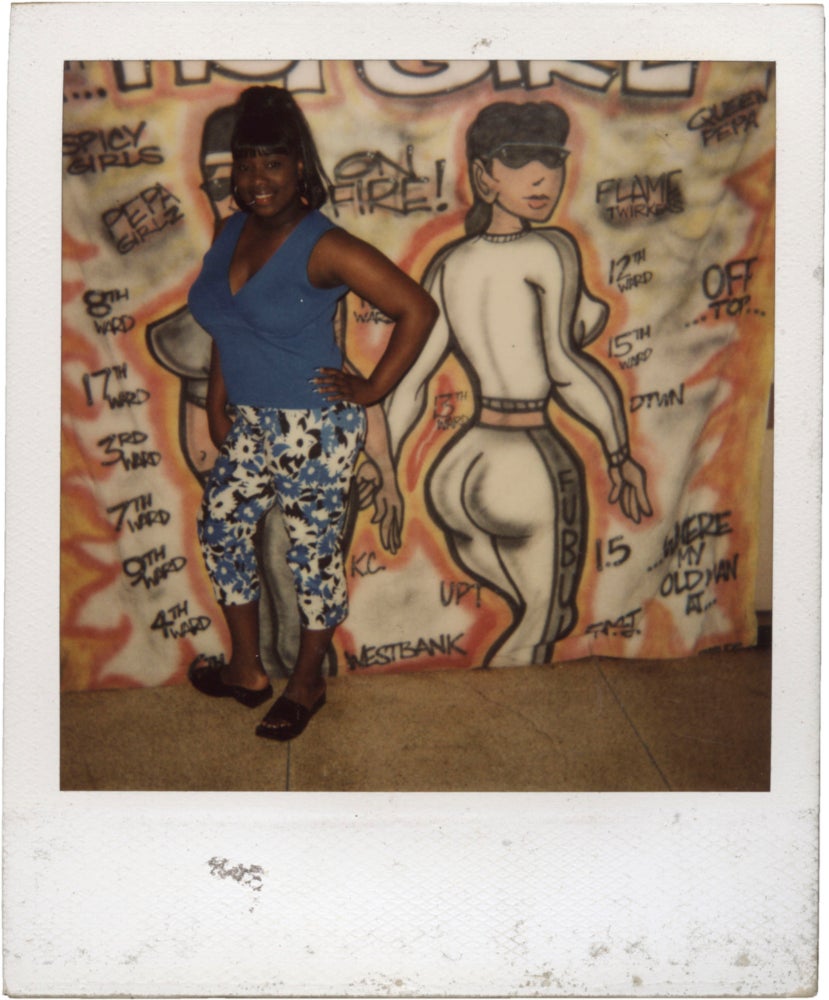
Polo wasn’t the first nightclub photographer in New Orleans, but he was the first to give the hip-hop generation what they wanted. On the ground, he was friends with many of the performers. If a new song hit, Polo’s cousin and creative partner, Otis Spears, would quickly respond with a larger-than-life scale airbrushed cloth backdrop to reflect what was hot. There were lyrics from hot songs, insignias, logos (referencing many designers, i.e., Ralph Lauren), aspirational items, and shouts to New Orleans neighborhoods. Whereas the older generation would bring one backdrop out for the night, Polo would have four options, with Spears creating new paintings each couple of weeks based on the requests and shifts in cultural tides. An interplay between the backdrop and the foreground is integral to the final image. Often, the wonderfully messy messages spilled into the exaggerated limbs of the sitter. Two of the backdrops were exhibited at NOMA. One of them, All About The Benjamins, 1998, is a big green tarp that takes its name from the Puff Daddy song released a year earlier. The iconic portrait of the American founding father sits in the middle of the big green $100 bill, his eyes rolling a little more to the corners, a knowing smirk that lives up to his social stature. Slyly sneaking into where we typically see the Security of the Treasurer’s signature is another name: Photos By Polo.
Picture Man: Portraits By Polo Silk was on view at the New Orleans Museum of Art (NOMA) in New Orleans, LA from July 16, 2022 through January 22, 2023.


